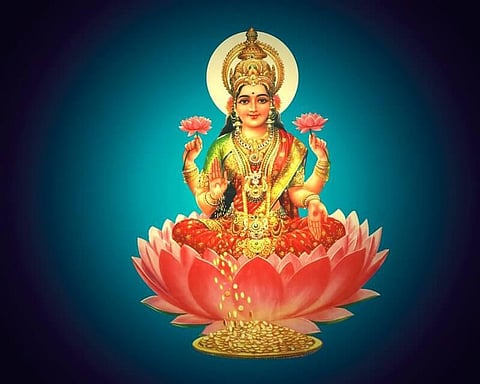In our Hindu religion, Shri Lakshmi is worshipped as the goddess of fortune, wealth, and beauty; Shri Saraswati is the goddess of education and knowledge; and Shri Durga perhaps the most widely worshipped aspect of Śhakti', is the personification of the goddess of power and bravery. These three female goddesses (Sridevi) are actually the three major manifestations of the One Supreme Power Maheśvari according to the three guṇas (tamas, rajas, and sattva). Each goddess is worshipped with 108, or 1,000 sacred mantras (sacred formulae) praising their powers, beauty, and leelās (pastimes).


